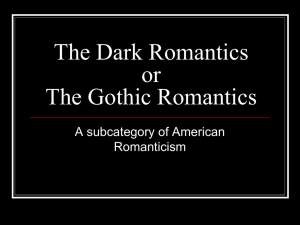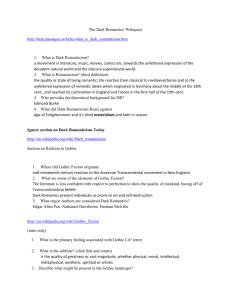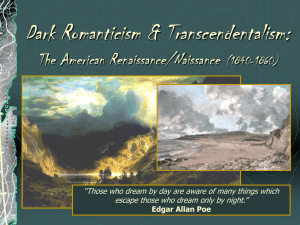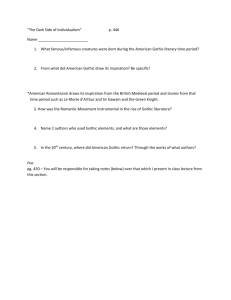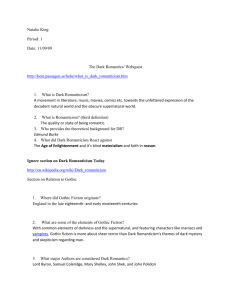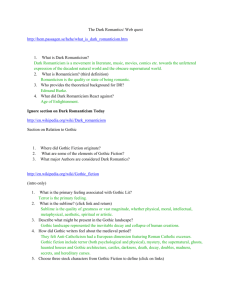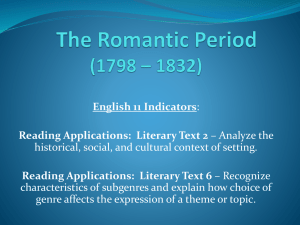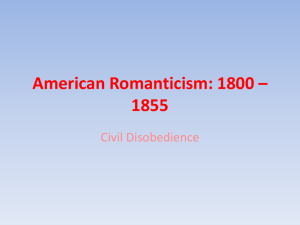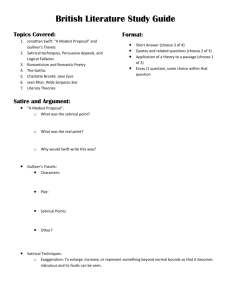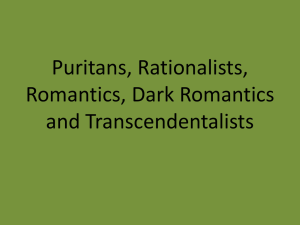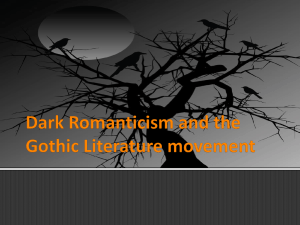The Dark Romantics
advertisement
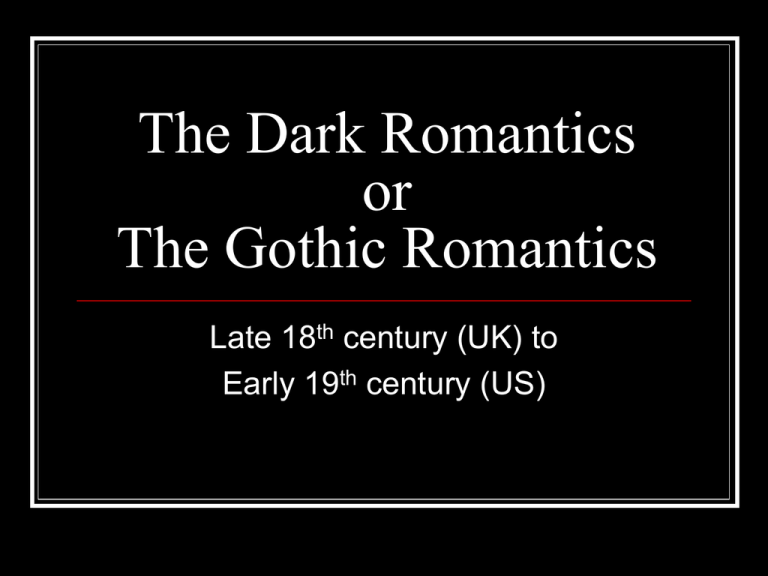
The Dark Romantics or The Gothic Romantics Late 18th century (UK) to Early 19th century (US) Comparing Literature Ages Remember…. Each successive age is a reaction to the previous one. Each previous age fails to see the achievement of the successive age. Using the chart on the next slide, explain how the Age of Reason reacted to Puritanism. Comparing Literature Ages Puritanism Age of Reason Faith Reason Authority Skeptics Theology Science Predestined Humanity Self-made Humanity The Romantic response to The Age of Reason and Industrialization… Over-crowding Urbanization Factory life/work Poverty How do you think the Romantics would respond to these issues in their stories? Comparing Literature Ages Puritanism Age of Reason Romanticism Faith Reason Extreme Emotions, Insanity Authority Skepticism Mystery, Suspense Theology Science Supernatural, Occult Legends, Dreams, Wild Nature Predestined Humanity Self-made Humanity Fate, Curses, Omens Elements of Dark Romanticism Drafty, old, family houses/castles Mystery and suspense, finding dark secrets Supernatural: ghosts, curses, monsters, etc. Grisly death and macabre murder Omens, curses, dreams, legends Extreme emotions of grief, passion, love Instances of madness and insanity References wild, dangerous nature Mood: creepy, doom and gloom, terror Dark Romantic Heroes Conflicted Loner Misunderstood by society Spiritual Talented or gifted in some way Inspired by creativity and imagination rather than society norms Modern Dark/Gothic Romanticism 1. Think of a modern movie or film that has Gothic/Dark Romance traits. Write it down in your notes. 2. Moving around the room, get three modern Dark/Gothic Romance titles from three different people. Write them down in your notes. Others will ask you for your title. 3. Sit in your seat when you have three titles. Bram Stoker Mary Shelley Edgar Allan Poe Herman Melville Sir Arthur Conan Doyle Nathaniel Hawthorne Washington Irving Charles Dickens Jane Austin

